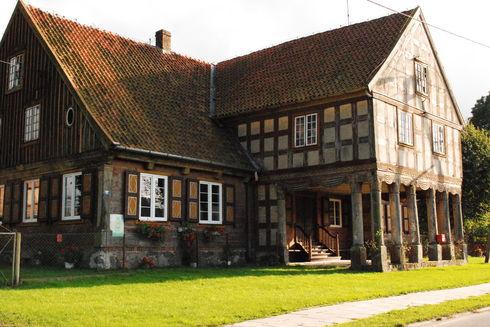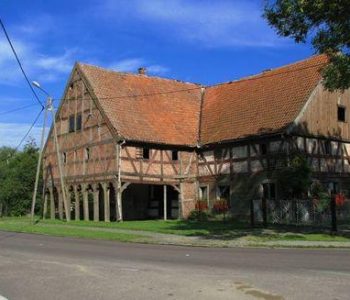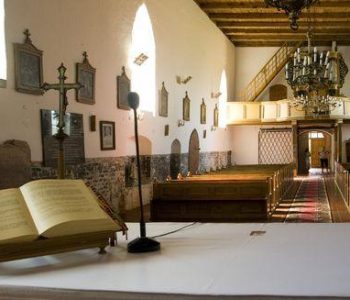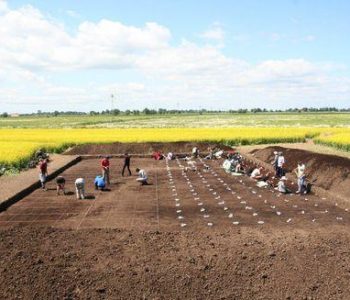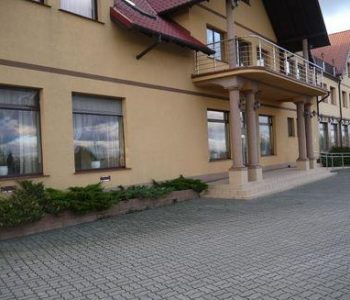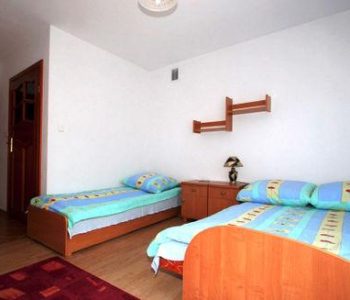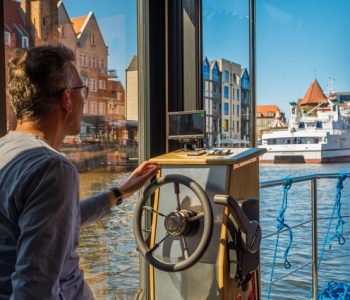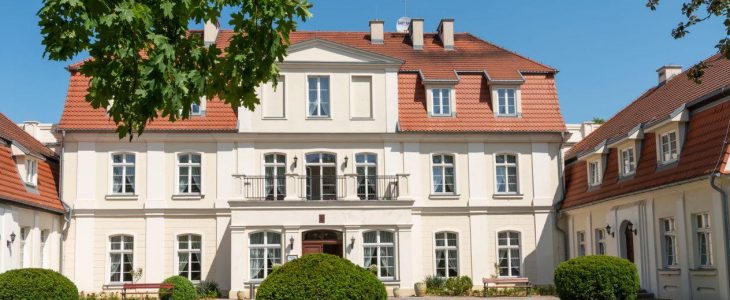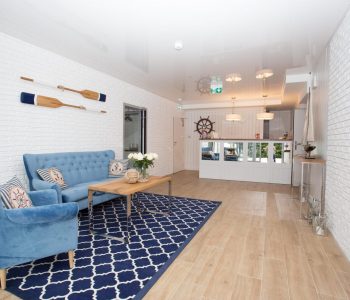The village’s cultural landscape has largely been preserved, particularly the wooden architecture from the 19th Century, including 4 arcade houses and a wooden granary. One such structure is the stone-based house from 1840, which belonged to Wilhelm Classem and later the Dyck Wiebe families. Fully wooden, half-timbered, it boasts an arcade supported on 6 front- and 2 side-stylised and half-timbered pillars.
The building was constructed on a plan of three perpendicular bays with a large room in the corner and a two-part rectangular hall, which divides the kitchen in the middle. The rooms are divided by stairs.
